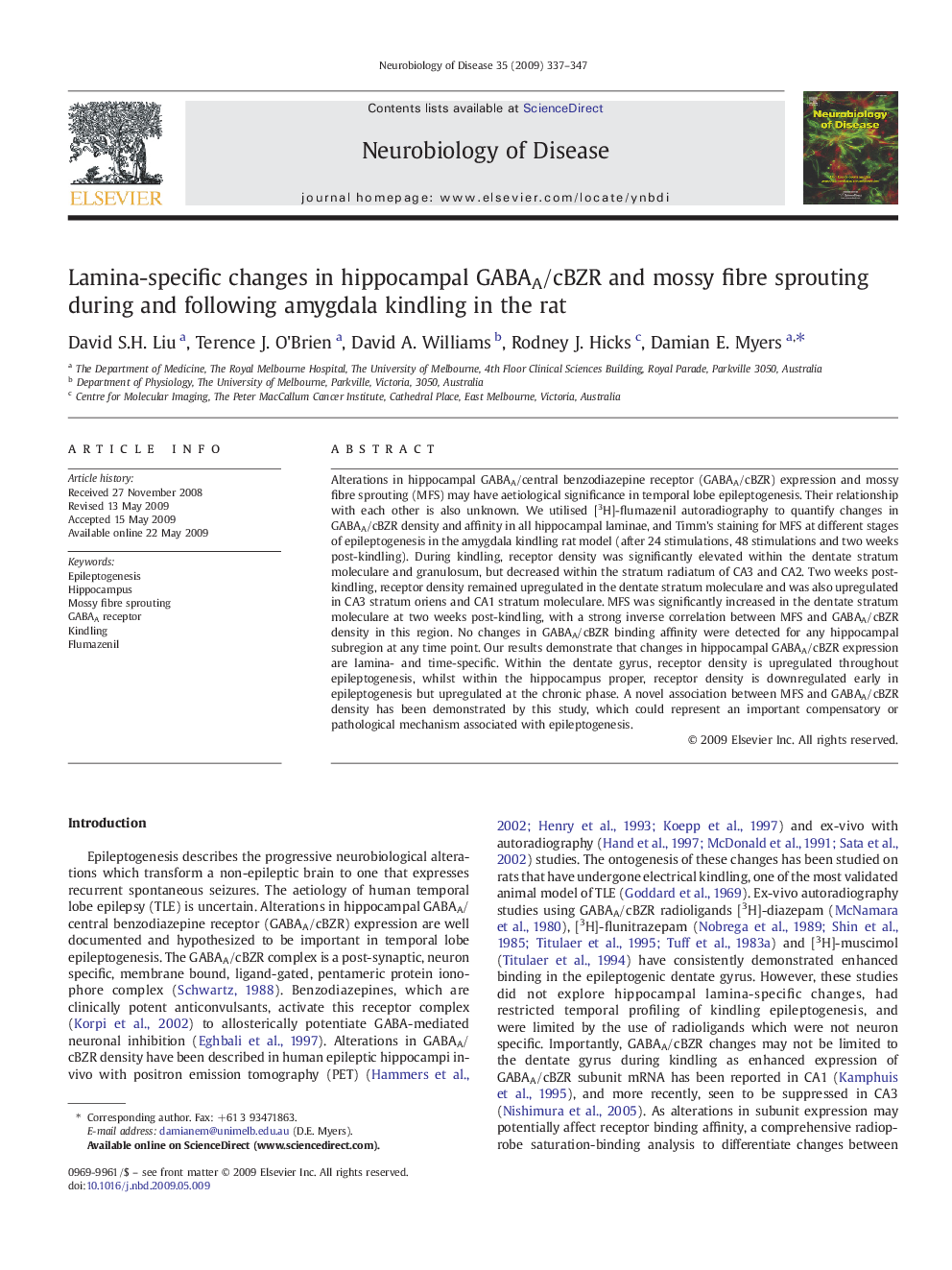| Article ID | Journal | Published Year | Pages | File Type |
|---|---|---|---|---|
| 3070194 | Neurobiology of Disease | 2009 | 11 Pages |
Abstract
Alterations in hippocampal GABAA/central benzodiazepine receptor (GABAA/cBZR) expression and mossy fibre sprouting (MFS) may have aetiological significance in temporal lobe epileptogenesis. Their relationship with each other is also unknown. We utilised [3H]-flumazenil autoradiography to quantify changes in GABAA/cBZR density and affinity in all hippocampal laminae, and Timm's staining for MFS at different stages of epileptogenesis in the amygdala kindling rat model (after 24 stimulations, 48 stimulations and two weeks post-kindling). During kindling, receptor density was significantly elevated within the dentate stratum moleculare and granulosum, but decreased within the stratum radiatum of CA3 and CA2. Two weeks post-kindling, receptor density remained upregulated in the dentate stratum moleculare and was also upregulated in CA3 stratum oriens and CA1 stratum moleculare. MFS was significantly increased in the dentate stratum moleculare at two weeks post-kindling, with a strong inverse correlation between MFS and GABAA/cBZR density in this region. No changes in GABAA/cBZR binding affinity were detected for any hippocampal subregion at any time point. Our results demonstrate that changes in hippocampal GABAA/cBZR expression are lamina- and time-specific. Within the dentate gyrus, receptor density is upregulated throughout epileptogenesis, whilst within the hippocampus proper, receptor density is downregulated early in epileptogenesis but upregulated at the chronic phase. A novel association between MFS and GABAA/cBZR density has been demonstrated by this study, which could represent an important compensatory or pathological mechanism associated with epileptogenesis.
Related Topics
Life Sciences
Neuroscience
Neurology
Authors
David S.H. Liu, Terence J. O'Brien, David A. Williams, Rodney J. Hicks, Damian E. Myers,
